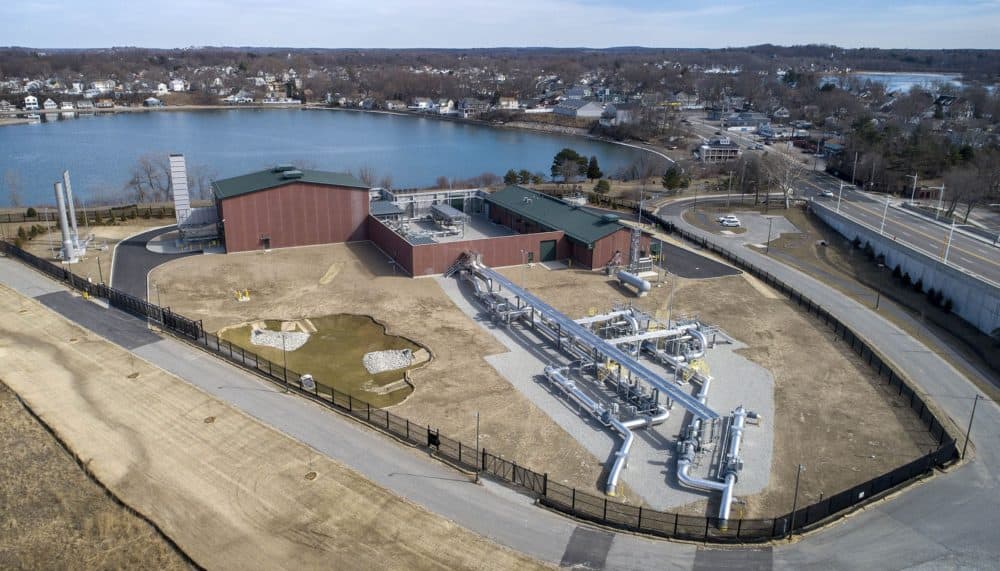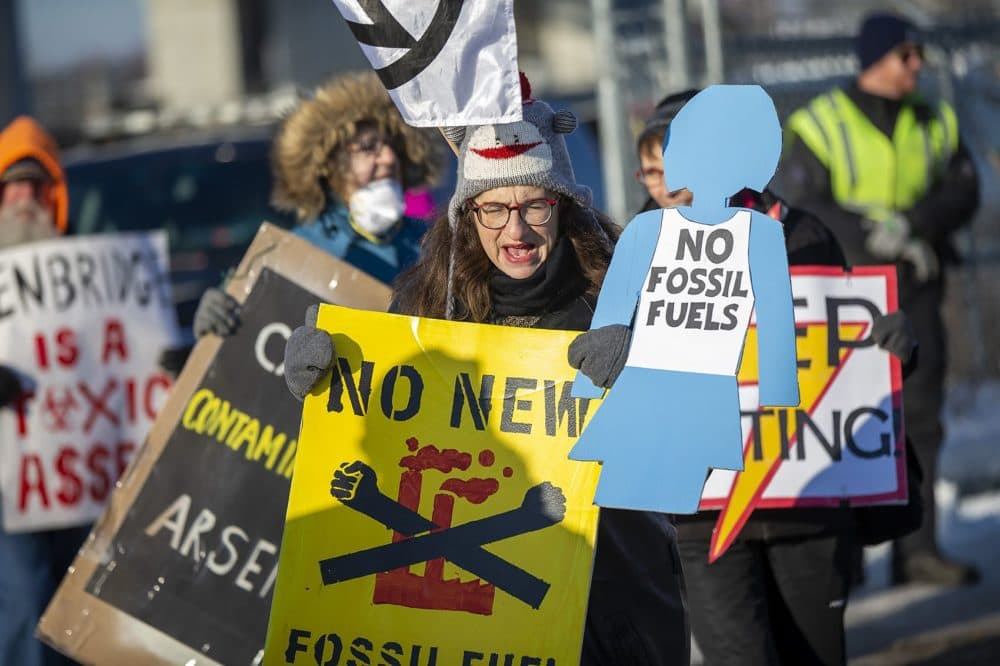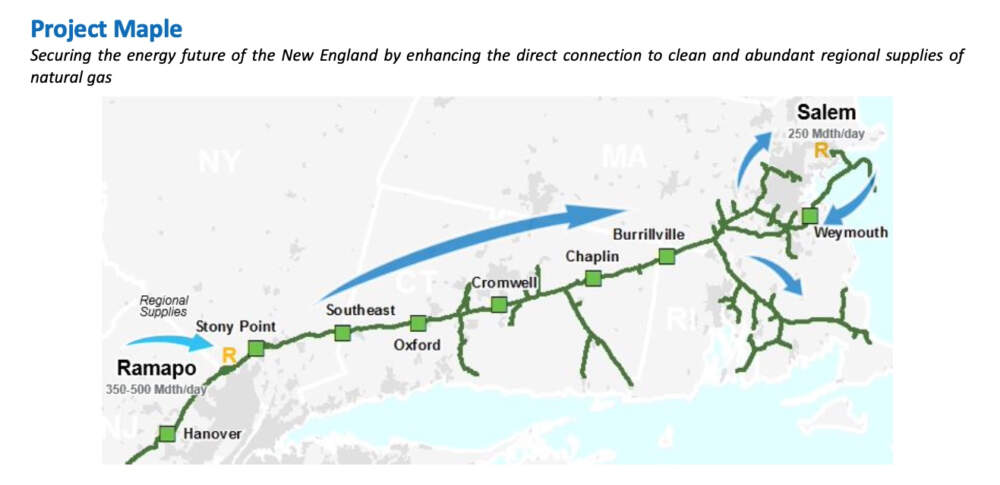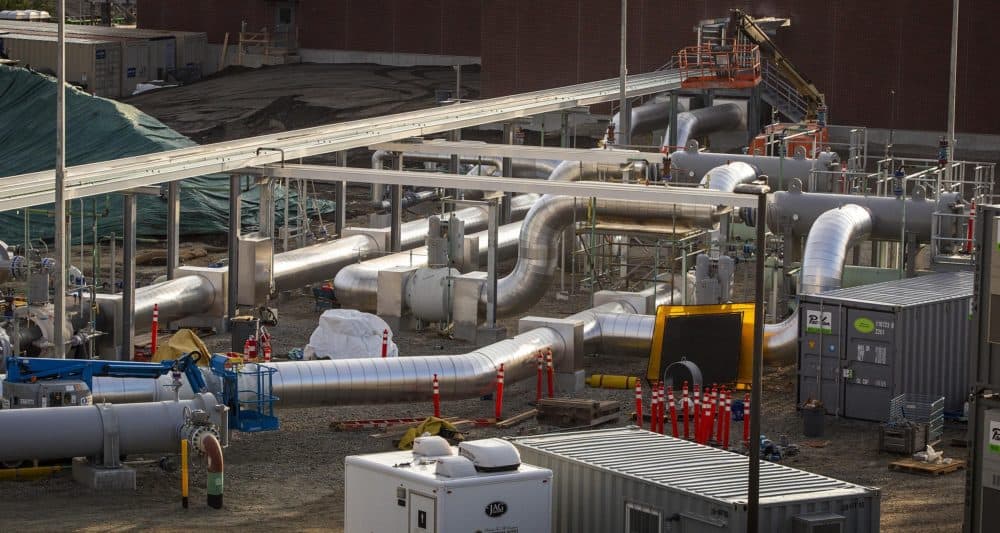Advertisement
Fossil fuel company wants to expand gas pipeline in Northeast

At a time when many states in the Northeast are actively trying to reduce their dependence on fossil fuels to help fight climate change, the company that owns a major natural gas pipeline in the region wants to expand the system and bring in more fracked gas.
Dubbed “Project Maple,” the proposal from Enbridge — a large Canadian energy company with fossil fuel infrastructure throughout the U.S. — would involve substantial upgrades on the Algonquin Gas Transmission line. This pipeline runs from northern New Jersey through parts of New York, Connecticut, Rhode Island and into Massachusetts, where it feeds into the Weymouth Natural Gas Compressor Station and then connects to another pipeline north of Boston.
Details about the proposed project remain vague, but according to documents from Enbridge, the upgrades would include replacing existing underground pipes with larger ones, running secondary pipe lines alongside existing ones and expanding some compressor stations along the route.
By expanding gas capacity on the pipeline, Enbridge says the project will help stabilize gas prices, increase electric reliability and “[support] New England’s continued journey to Net Zero” by displacing oil use in the region on cold days.
Project Maple is “designed to expand Algonquin in a smart, targeted manner to meet the region’s growing needs for reliable access to natural gas,” Max Bergeron, an Enbridge spokesman, wrote in an email.
But for environmentalists, building new gas infrastructure is unnecessary and antithetical to the stated carbon reduction goals of many states in the region.

“I’m skeptical of Enbridge’s claims that this project would be beneficial to the region,” said Kyle Murray, the Massachusetts program director at the Acadia Center. “As we saw this past winter, with dramatic energy price spikes occurring in the natural gas market, our region is already over reliant upon natural gas for its heating and electric needs. Expanding this pipeline as the region is quickly moving to electrify its heating sources and develop more renewable generation makes little sense.”
Nathan Phillips, a Boston University professor whose work often focuses on natural gas infrastructure, agreed. He called the Project Maple proposal “odious,” and said Massachusetts and other states in the Northeast “don’t need the extra capacity that [Enbridge] is calling for.”
We have “better solutions,” he said.
Massachusetts, like many other states in the region, has aggressive climate goals that require dramatically reducing reliance on fossil fuels like natural gas. By 2050, the state aims to get most of its electricity from non-carbon emitting sources of power like wind, solar and hydropower. There may be some fossil fuel power plants still operating by then, but the state plans to slash emissions from the electricity sector by 93% over 1990 levels.
Advertisement
“We are at a critical juncture in both our nation's history and in world history in recognizing the real, tangible, serious effects of climate change on our health, our environment, our communities” said Gillian Giannetti, a senior lawyer with the watchdog group The Sustainable FERC Project. “This is not the time to casually add more fossil fuel capacity.”
What does Project Maple entail?
Without a local source of natural gas, New England relies entirely on fuel from other parts of the country. Most of the gas the region uses comes through underground pipelines like the Algonquin Gas Transmission line — if you live in Eastern Massachusetts, you likely rely on the Algonquin pipeline for heating or electricity.
Natural gas is measured in “dekatherms,” and the Algonquin pipeline currently can carry about 3 million dekatherms per day, or about 3.12 billion cubic feet of gas. (For context, the average household in Massachusetts that heats with gas uses about 10-12 dekatherms of gas per month during the winter.)
Enbridge wants to expand the system and sell more gas from two points on the pipeline. At one end in Ramapo, New Jersey, the system could provide an extra 500,000 dekatherms of gas per day, and at the other end, in Salem, Massachusetts, the pipeline could carry an extra 250,000 dekatherms per day.
That represents a substantial increase in gas capacity on the pipeline. And in order to move all this extra gas through the pipeline, Enbridge may need to expand existing compressor stations as well. (Compressor stations “compress” gas to give it a boost and help it move efficiently through a pipeline.)

Enbridge spokesman Max Bergeron said the company does not "anticipate adding any additional compression at the Weymouth Compressor Station as part of this project.”
In its description of the project, Enbridge says most of the construction will take place “within or adjacent to existing rights-of-way and at company-owned facilities,” meaning that it “can be developed with minimal impacts to landowners, local communities and the environment.”
But Phillips, the BU professor, said he’s skeptical.
“I don’t think anyone is taking anything [Enbridge] says with a great deal of confidence,” he said. The company’s description of the project “set the alarm bells off” in Salem and Weymouth.
Why does Enbridge say the project is needed?
As noted above, New England doesn’t have a lot of options for getting natural gas. But the region is also very gas-dependent; thousands of homes rely on gas for heating and more than half of New England's electricity is generated at gas-fired power plants.
According to Enbridge, despite state climate commitments, demand for natural gas is projected to increase in the near future. And a failure to meet that demand, the company says, will result in even higher energy prices and could put electric reliability at risk.
Enbridge is also positioning Project Maple as a climate-friendly project for the region.
It “will provide New England with an opportunity to secure a cost effective, regionally produced, environmentally responsible source of clean-burning natural gas to support the current and future demand for energy,” the company wrote.
The logic is two-fold: First, if power plants have more gas, they can rely less on dirtier fuels like oil. And second, as the region builds out renewables, it will need so-called “balancing resources” that can quickly ramp up to keep the lights on. Enbridge argues that using gas-fired power plants to “offset the supply gaps that occur” when the sun isn’t shining or the wind isn’t blowing will allow the region to safely add more renewables to the grid.
While most energy experts say some amount of firm and reliable power will be needed in the future, there's a great deal of debate over what that will look like. Batteries, for instance, could help offset some of those “supply gaps.”

Though not explicitly stated in Enbridge’s description of the project, some energy experts believe Enbridge may also be hedging its bets in the case that the Everett Marine Terminal closes next year. The terminal is an important piece of energy infrastructure that accepts liquified natural gas from big tankers and turns it into methane gas that can be used to run power plants and heat homes.
Traditionally, about 80% of the methane that comes through the Everett terminal has been purchased by the Mystic Generating Station, the region’s largest gas-fired power plant. The other 20% goes into the underground pipeline system where it’s used by other power plants or for home heating.
The Mystic power plant is slated to close next summer, which makes the future of the Marine Terminal uncertain. The company that owns the terminal has said in the past that it can’t afford to keep it open after Mystic shutters next year unless another buyer for its gas steps up. So far, that hasn’t happened, meaning the New England region could face even bigger gas supply constraints in the near future.
Can climate-conscious states like Massachusetts stop this project?
Interstate gas pipelines like Algonquin fall under the jurisdiction of the federal government, specifically the Federal Energy Regulatory Commission. But there may be a role for Massachusetts and other states along the pipeline. The original Algonquin pipeline — like the Weymouth Compressor — required state and federal permits.
It’s possible that the project will need the same, said James Coleman, a FERC expert and law professor at Southern Methodist University. But without knowing the full scope of what Enbridge is proposing, he said it’s hard to say what the permitting process will look like.
Massachusetts environmental officials did not immediately respond to a request for comment about the proposed pipeline project.
The state approved several environmental permits for the Weymouth Natural Compressor Station during former Gov. Charlie Baker's administration, much to the dismay of climate activists and south shore residents. Things have changed since that happened, though.
Under a 2021 state law, any major project being built in a state-designated environmental justice neighborhood, like Weymouth, requires extra scrutiny. The law also requires that state agencies look at how any new project would contribute to any existing environmental impacts in an area, rather than simply looking at the impacts of a project in a vacuum.

So what happens now?
In order for a project developer like Enbridge to get the green light to move forward, it first needs to prove to the Federal Energy Regulatory Commission that the project is in the public good. In the energy world, that means proving there’s demand for the project, which is done through an auction process. The company began that process on Sept. 12.
After the bids are in, Enbridge will ask the commission for what’s called a “Certificate of Public Convenience and Necessity.” This filing will trigger an environmental review as well as public comment period where concerned citizens, environmentalists and state leaders can weigh in on the project.
Getting this certificate — plus any other permits the project requires — will likely take several years and Enbridge anticipates its proposed expansion will be on line as soon as Nov. 2029.
There are other complicating factors. Congress is debating changes to the environmental review process for energy projects, which could make pipeline projects like this easier to build. And the five-member Federal Energy Regulatory Commission currently has one vacancy and a lame duck commissioner whose tenure ends later this year. Who is nominated to fill those seats could be help determine whether the commission looks favorably upon the project.
But while there are a lot of uncertainties about the future of Project Maple, Phillips, the BU professor, said one thing is clear.
“The fight is on," said Phillips. "We’re mobilizing and we’re going to [put] pressure everywhere” to stop it.
Editor's note: A previous version of this story misstated where the Algonquin Gas Transmission line connects with the Maritimes and Northeast Pipeline in Massachusetts.
